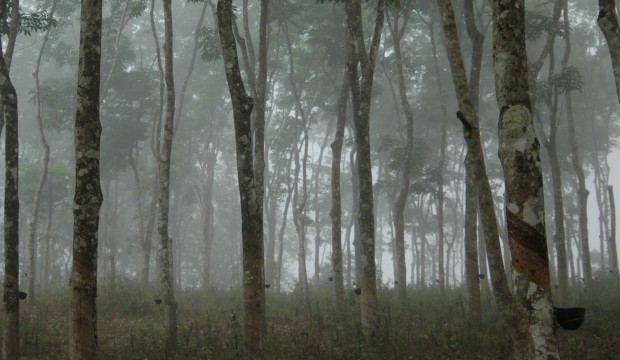March, 12, 2014

The experiments carried out to grow rubber in several areas in the North and East where the soil, climatic conditions and other factors are conducive have been successful and hence rubber has begun to be grown as a commercial crop in areas like Padiyatalawa, Mahaoya and Uhana in the Ampara district and Mamaduwa and Madukanda areas in the North, says the head of the Rubber Research Institute (RRI).
RRI Director Dr. Gamini Seneviratne told AdaderanaBiz that in the Ampara district alone an extent of 500 hectares of rubber has been grown by now under this project.
“Rubber as a commercial crop has already been grown on some 150 hectares in the Mamaduwa and Madukanda areas in the North. The most significant feature here is the rubber trees grown here providing almost the same amount of sap as in other traditional areas,” said Dr. Seneviratne.
The Government’s aim is to increase the North-East rubber plantations up to 3,000 hectares. Accordingly, towards increasing the growing of rubber in these areas experiments are being carried out to find out whether the Visvamadu and Puthukudiiruppu areas are also suitable.
Experiments to find out whether the North-East is suitable for growing rubber began in 2003. Head of the RRI told AdaderanaBiz that when world market prices are at an average, a profit of around Rs. 25,000 could be gained from each hectare of rubber in these regions.
The future demand for rubber from local as well as foreign industries would increase and the demand for natural rubber would be more.
Though there had been 199,000 hectares of rubber plantations in Sri Lanka in 1990, it had dropped to 130,000 hectares by now.
Earlier, the world’s largest buyer of rubber was the United States of America which also possessed the largest economy in the world.
However, this position has now changed. Speedily developing China has advanced as the greatest buyer of rubber while pushing the USA to second place. This means that China buys some 35 percent of the natural rubber produced in the entire world.
Video Story